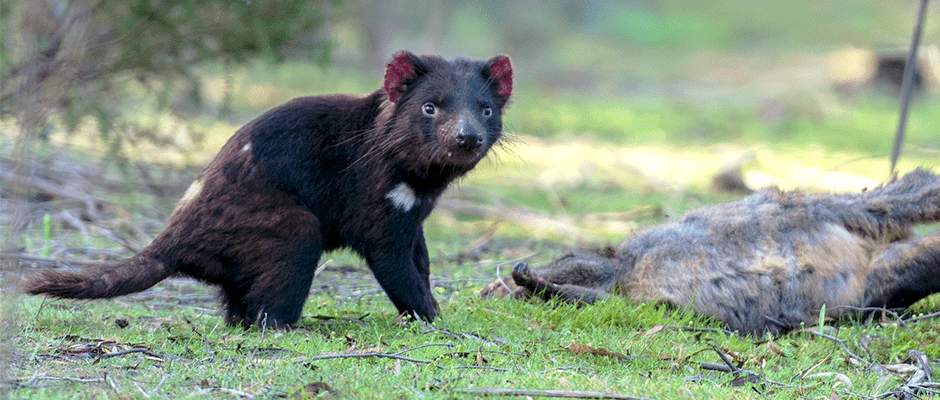Share this article
Tasmanian devils decimated by face cancer
In 1996, a wildlife photographer in northeastern Tasmania snapped the first records of Tasmanian devils (Sarcophilus harrisii) with lesions marring their faces. Researchers recently found that since then devil facial tumor disease has rapidly spread throughout the devils’ range on the Australian island and threatens local extinctions as it decimates the endangered species.
“We’re still observing this decline in devil numbers,” said Billie Lazenby, lead author on the paper published in the Journal of Applied Ecology. “We’re now dealing with very small populations that have declined, in some cases, over 80 percent as a result of devil facial tumor disease.”
A wildlife biologist with Australia’s Department of Primary Industries, Parks, Water and Environment, Lazenby and her collaborators at San Diego Zoo Global, Toledo Zoo and the University of Tasmania studied broad- and fine-scale changes in devil density in the wake of devil facial tumor disease. They analyzed devil counts from annual nocturnal mobile surveys across Tasmania spanning back to 1985 and from nine locations statewide where they trapped and released devils starting in 2004.
The researchers found areas impacted by the disease showed drops in Tasmanian devils, followed by spikes in younger individuals breeding. Because the disease has driven down their overall population, Lazenby said, more resources may be available for the remaining devils, allowing them to grow and reproduce more quickly. Females under two years old could also be reproducing more as the disease has claimed the lives of most older devils, Lazenby said. Past genetic research has shown that the devils could be evolving resistance to the disease by breeding earlier as well and surviving longer with the cancer, she said.
Lazenby and her partners are testing strategies for boosting devil abundance in areas affected by what she considers “the biggest threat” they face. As the scientists work on understanding and mitigating other stressors including drought, bushfire and roadkill, they’re trying to counter the devils’ loss of genetic diversity by introducing genetically diverse captives into the wild.
“Most of the island has been impacted,” Lazenby said. “The disease will likely cover the entire state in a short amount of time. Whilst there is research underway into the development of an immunotherapy, there’s nothing yet we can deploy in the field, so we’re limited to managing devils with the disease.”
Header Image: A healthy Tasmanian devil looks over at the camera. ©W.E. Brown








